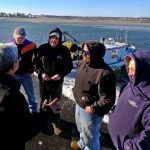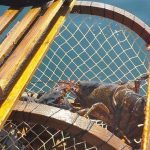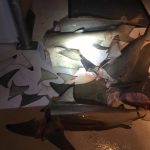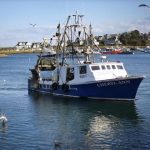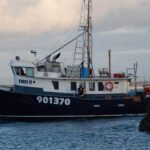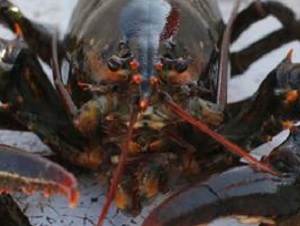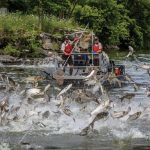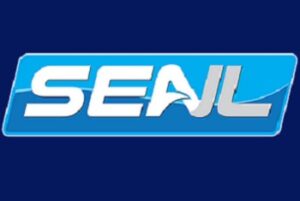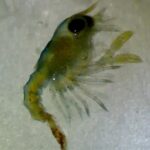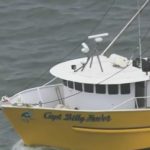Tag Archives: Nils Stolpe
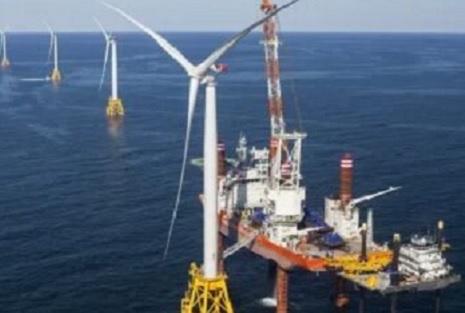
Where have all the dead whales gone? By Nils Stolpe, FishNet-USA
Beginning in December of last year and extending through most of the first quarter of 2023, New Jersey and New York beaches were inundated with abnormally high numbers of dead or dying whales and smaller marine mammals. These majestic creatures-though not so majestic when being pushed about willy-nilly by tides, wind, waves and various types of earth moving machines-have never expired in such large numbers in such publicly accessible locations in local residents’ memories. Perhaps coincidently, intensive hydroacoustic surveys to determine the suitability of potential sites for the construction of thousands of gigantic windmills and their supporting infrastructure (supposedly to help us all survive what is being sold as an imminent energy/climate crisis) were being committed offshore of the beaches where all of these marine mammal deaths and strandings have been concentrated. To us inveterate observers of that hunk of Atlantic Ocean real estate known as the New York Bight, and the critters that temporarily or permanently live there, and of the actions of the public agencies charged with-and entitled to tens of millions of taxpayer dollars each year to do so-administering the Endangered Species and the Marine Mammal Protection Acts, that surely hints at, at best, ineptitude at that’s ineptitude at a fairly advanced level. >click to read the article< 16:14
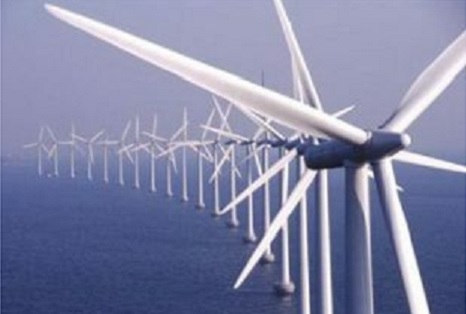
Nils Stolpe: How many statisticians does it take to….
Screw in a lightbulb? Trivialize the deaths of at least two dozen whales? Convince the world that the massive installation of wind power off our East Coast won’t irreparably damage our estuarine, inshore and offshore ecosystems? The folks at NOAA/NMFS (and with the convenient parroting of myriad so-called environmentalists, and BOEM, the other part of the federal cheerleading squad selling Ocean Wind as a major solution to our “energy crisis”) have declared that it hasn’t been proven that there aren’t any relationships between the extensive survey work being committed by Big Wind and the associated contractors and the two dozen deaths that have been visited upon several species of whales off New York and New Jersey. What is their proof? Inadequately enough, their “proof” boils down to the fact that they have seen no proof. To my way of thinking, that’s tantamount to convicting someone of murder because there is no proof that he or she isn’t a murderer. But it appears as if, as far as dead whales and President Biden’s and New Jersey’s Governor Murphy’s windmill fantasies are concerned, that’s good enough. At least for NOAA/NMFS, BOEM and a bunch of environmental organizations. Why? >click to read< 09:54
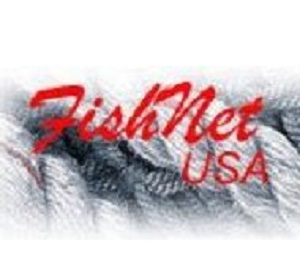
North Carolina Sports target commercial fisheries – example #3 in 2022

Looking Back: Nov.7, 1998 – “Conflict of interest, and fishery management”, By Nils Stolpe
This Looking Back features Nil’s insightful research into the funding source of fishery management bodies in the USA. This article was written in 1998, and the funding sources are still the same, although the monetary amounts are certainly different now. In light of the recent ASMFC /MAFMC allocation steal, covered in dec 20th posting on Fisherynation by Jim Lovgren, [who mistakenly stated that the management funding was by SK money, which is an import-based tax, it is actually Wallop-Breaux funding which is the tax on recreational gear and fuel]. This issue needs to see the light of day again, the conflict is clear, and now they’re using bad science against us. >click to read< 18:35

How Valuable Is FishNet-USA?
The question should actually be “how much is FishNet USA worth to you?” I’ve been writing stuff for the commercial fishing industry for over three decades. That’s a lot of words, and I suspect that no one who is on the present distribution list, who has read my columns in National Fishermen or on Saving Seafood, or has FishNet issues forwarded to them from someone on the list has not benefitted from some of them. Thanks to the Covid mess, and also thanks to what seemed to me to be some philosophical differences between me and some prior sponsors who were part of a commercial fishing consortium that was trying to get into the windmill business, my industry support has dwindled down to the point where the funds coming in just about cover my internet/telecommunications costs. Unlike just about all of our domestic fisheries, this is not sustainable. >click to read< By Nils Stolpe 16:26

An East Coast Perspective on Coronavirus Impacts
This was initially to be about how the New Jersey commercial fishing industry was coping with the coronavirus crisis. However, there is a seemingly infinite number of websites running commentaries on the national and/or international aspects of the ongoing pandemic in general and, surprisingly, as it specifically applies to and as it affects commercial fishing and the seafood industry. Considering this, sharing more than an overview of what the New Jersey industry, or at least that part of it that I have been in touch with, would probably not have much of an impact. But happily, at this point it seems that U.S. consumers aren’t really as averse to preparing quality seafood at home (when it isn’t available or is only limitedly available elsewhere) as most of us have believed. >click to read< By Nils Stolpe 12:05

Looking Back with FishNetUSA: The case for Bureaucratic Monitoring Systems (BMSs)
A good friend of mine is a New Jersey gillnetter. An acknowledged highliner, he’s served and continues to serve on several state and regional advisory committees, has always participated in the management process, and has never received a NOVA or been convicted of violating any federal or state fisheries regulations. One requires that he have a Vessel Monitoring System (VMS) operating 24 hours a day, 7 days a week, 52 weeks a year.,, This got me thinking, and one of the things it got me thinking about was all of those bureaucrats paid from the U.S. Treasury.,, So why isn’t the wearing, or perhaps implantation if that is a practical alternative, of Bureaucrat Monitoring Systems (BMSs), required as a condition of public employment? >click to read< 13:19
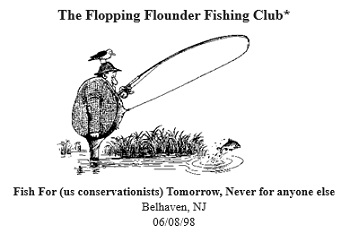
Looking Back at FishNet USA – “New Conservationists” and the Flopping Flounder Fishing Club
In these days of seemingly unrelenting grim news I thought I’d try to lighten the atmosphere somewhat by sharing with you what I consider possibly entertaining piece I wrote and distributed twenty years ago. For those unfamiliar with Mid-Atlantic fisheries management, the striped bass (Morone saxatilis) fishery is managed by a per-state quota, and each states’ quota is divided into commercial and recreational components. Way back when the New Jersey Legislature passed a bill which made it illegal to sell striped bass so the commercial quota was added onto the recreational quota. The commercial was never – and still isn’t – very large, but the unfairness of the law and the fact that it on occasion it necessitates the over-the-side disposal of what would (should?) be perfectly saleable striped bass bycatch grates on a whole lot of commercial fishermen. Please stay safe and healthy, Nils >click to read< 11:38
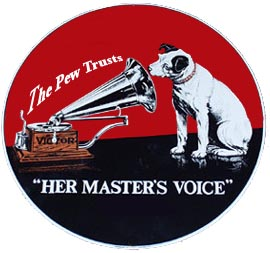
“Looking Back”: The Keep Fishermen Fishing Rally
Measured by any meaningful criteria the Keep Fishermen Fishing rally held on the steps of the Capitol on March 21 was a stunning success. It was attended by thousands of fishermen from as far away as Alaska, twenty one Senators and Members of the House of Representatives, and at least a half a dozen other VIPs made room in their busy schedules to come out and address the people who attended. From the most conservative of the conservatives to the most liberal of the liberals, these politically divergent speakers had one message; fix the Magnuson Act and bring back the balance between conservation and harvest. For the second time at the national level recreational and commercial fishermen – no matter what fisheries they participated in, no matter what their disagreements on allocation or lesser issues were, and no matter where they were from – were standing together and demanding a return to the original intent of the Magnuson Act;,,, >click to read< 08:09

“With a bit of prodding by some valued colleagues”, we will be launching a series “Looking Back”
A few of us were conversing, and the topic of resurrecting’s some of the posts, pages, and information of the past to gauge the changes and improvement’s achieved though the past few decades of fishery management and sacrifice, or if there have been any improvements at all! Nils Stolpe, Jim Lovgren, and I thought perhaps these various posts and articles would give an indication of how the domestic fishing is doing! Both of these gentlemen are exceptional writers, with exceptional knowledge of the domestic fishing industry and they have been featured here many times. We hope people revisit these articles, and for many of the newer fishermen in the industry today, this may be the first exposure to this interesting, and valuable info, and other stories. We’ll kick it off with “With a bit of prodding by some valued colleagues,” >click to read< 13:07
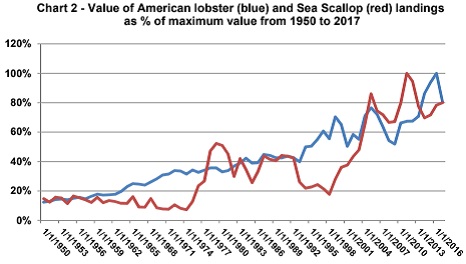
After over forty years of NOAA/NMFS management how are we really doing? Nils Stolpe
The Magnuson-Stevens Fishery Conservation and Management Act – I have seen the focus of government fisheries manage-ment increasingly shift away from the fishermen to the fish. The provisions of the Act as it was originally written were put in place to allow the U.S. fishing industry to regain control of the fisheries in the United States’ highly productive coastal waters,,, The legislation was singularly effective, so effective that within ten years or so of its passage the greatest portion of our domestic fish and shellfish production was being harvested by U.S. fishermen on U.S. vessels. This success was sold to the U.S. public – and the U.S. politicians – as an assault on the “sanctity” of our coastal waters by a burgeoning environmental industry that was (and still is) engaged in non-governmental empire building. This has resulted in a handful of multi-national ENGOs (Environmental Non-Governmental Organizations) that have become at least as influential as the fishing industry in national and international fisheries management. >click to read, and review the links and graphs<16:10
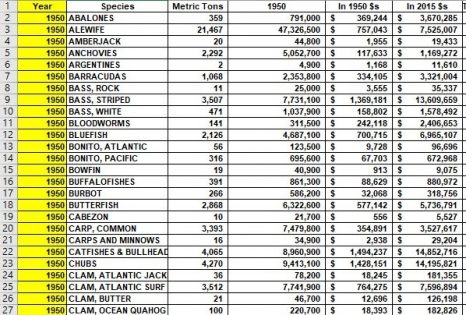
Commercial Fishing in the U.S. Exclusive Economic Zone – What was being caught and where back to 1950
What is the status of commercial fishing in the U.S. Exclusive Economic Zone, the waters from 3 to 200 miles off our coastline? Generally speaking – something that the “bureaucrats in charge” have developed a great deal of facility in doing – it’s pretty good. Since the National Marine Fisheries Service started getting serious about tracking commercial landings (or at making those landings readily accessible) in 1950, the total weight of our domestic landings has increased from 4.9 billion to 9.8 billion pounds. The value of those landings, when corrected for inflation, has increased from $3.3 billion to $5.2 billion, almost as good. Nils E. Stolpe/FishNet USA >click to read<17:03
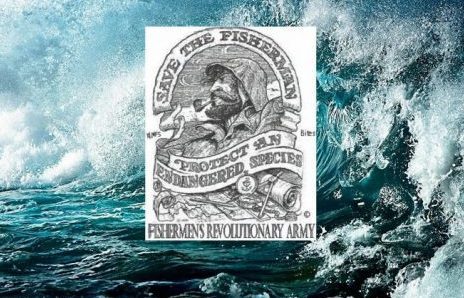
Nil’s Stolpe writes, The Magnuson-Stevens amendment I want under the Christmas tree
OVERFISHING! This has become one of the oceans branch of the doom and gloom prognisticator’s (aka Environmental Non Governmental Organizations or ENGOs) principal calls for alms. To wit, they have collectively raked in hundreds of millions of dollars from big business-supported foundations and trusting members of the public to persecute (generally commercial) fishermen who they preach are the cause of “overfishing,” the major threat to the sanctity of the oceans. (I’ll note here that the Pew “Charitable” Trusts was the multibillion dollar foundation that initiated the war on fishermen.) This purposeful misuse of the term “overfishing” has been one of the most subtle and most effective weapons in the anti-fishing activists’ arsenal. Nils Stolpe FishNetUSA >click to read< 18:00
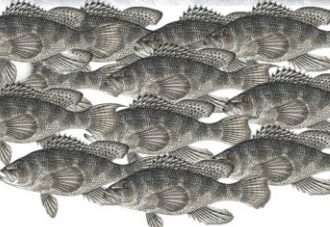
FishNet-USA – What do you do with it?
A message from Nils Stolpe – I know that a lot of commercial fishing industry people receive FishNet-USA, but I don’t have a solid handle on what gets done with it after it’s received. I hope that you all read it. I know that some of you do because I’ll get an email or two after every issue complimenting me on it, but I don’t have much of an idea what happens after that. Accordingly I’ve put this note together to let you know what I think you should do with it after you read it – assuming that you agree with at least some of what I’ve written, and that you’d like to have other folks read it. click here to read the recommendations 08:25 

What’s so hard about managing fisheries?
Nils Stolpe/FishNet USA May 3, 2017 – “We live in a world in which data convey authority. But authority has a way of descending to certitude, and certitude begets hubris. From Robert McNamara to Lehman Brothers to Stronger Together, cautionary tales abound. We ought to know this by now, but we don’t. Instead, we respond to the inherent uncertainties of data by adding more data without revisiting our assumptions, creating an impression of certainty that can be lulling, misleading and often dangerous. Ask Clinton” Stephens, B., Climate of Complete Certainty, NY Times, 4/28/17. The above quote was from an op-ed piece by Bret Stephens, the New York Times’ recently acquired columnist. While he was targeting climate scientists, their “disciples” and the overblown pseudo-science hidden beneath an oversufficiency of less than convincing statistics that is used to strengthen their arguments, it appears that fisheries scientists are increasingly adopting the same techniques (the emphasis is mine) to support their often erroneous – sometimes sadly so – conclusions. Click here to read the article. 10:48
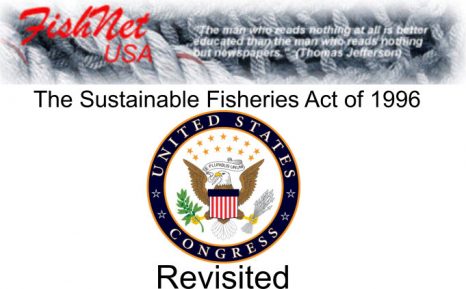
The Sustainable Fisheries Act – January 11, 2000 Revisited
I’ve been reviewing my past writings to gauge which, if any, have aged gracefully and which haven’t. I’ll be redistributing those that I think were particularly noteworthy, either because they were – and perhaps still are – on target or because they weren’t – or aren’t. The following addresses some of the more onerous provisions of the Sustainable Fisheries Act of 1996, which at the time were being fully implemented. I’ll leave it up to you to determine whether I hit this nail on the head or not. I’d be really interested to hear what you think. Nils Stolpe. From the article: Under the provisions of the federal Sustainable Fisheries Act (SFA), at any point when the populations of each of these competing species aren’t at MSY they are considered to be “overfished” and stringent harvest restrictions implementing strict rebuilding schedules (to MSY) are mandated. By requiring that all species be at their MSY, our coastal waters are expected in the SFA to support a level of overall production that is ecologically impossible, and fishermen, both recreational and commercial, are expected to reduce their catch to meet this impossible standard. Continue reading the article here 14:45
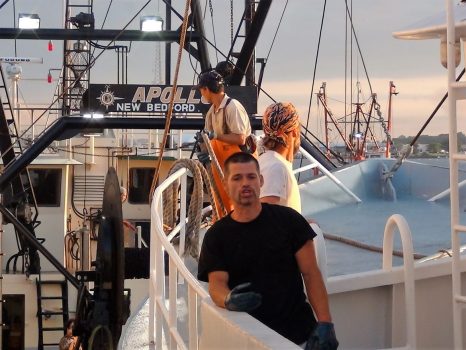
A look back at the evolution of Catch Shares
In 2010 CSF board member Nils Stolpe conducted some exhaustive research into catch shares as a management tool and given what has transpired since it is worth looking over his findings today. Here, for example is a prophetic quote from the NEFMC’S June 2010 Draft Environmental Impact Statement for Amendment 15 to the Council’s Sea Scallop Fishery Management Plan : “…consolidation measures like ITQs, but also more generally leasing and stacking, tend to have their negative impacts on those less powerful segments of the fishing industry, namely the crew, or the small business owners without a fleet of vessels or vertically integrated business. Those who are better able to take advantage of measures like leasing or stacking are then increasingly able to exert control in various markets, such as leasing quota, hiring crew, or even affecting prices that fishermen receive for their product. These kinds of changes, in turn, affect the structure of communities—through changing relations between people and shifts in dominant values—and affect the viability of fishing communities as some are disproportionally impacted by geographic shifts in fishing businesses.” That was about the scallop fleet but the impact is now decimating single boat owners in our New England groundfishery. The complete report (three papers) is included here 14:28
I.U.U. Fishing/The latest supposed ocean crisis/All the news that’s fit to print?
 Nils Stolpe/FishNet USA – Over the past several years there has been much discussion, debate, posturing, misrepresentation, exaggeration and incipient empire building on and around the subject of illegal, unreported and unregulated (IUU) fishing. Most of this has been driven by ENGOs and the mega-foundations that support them because they have all of these fish saviors on the payroll with, since the demise of overfishing, not an awful lot to do. Not surprisingly the Obama administration has been complicit in this. Starting out with a point of clarification, IUU fishing is, or should be, a concern in some areas of the world’s oceans – but for reasons that I’ll get to an a bit, it isn’t, or shouldn’t be, in the U.S. Exclusive Economic Zone (EEZ). In spite of this you can bet dollars to donuts that that’s where all of the ENGOs will be focusing their IUU efforts, because it’s a lot more comfortable, convenient and safe to assault domestic fishermen from their cushy digs in Philadelphia or Washington DC than from some tropical or sub-tropical Hell hole where most of the IUU activity is based. And, I’m sure the feeling in those cushy digs in Philadelphia and Washington is that the public and the pols aren’t sophisticated enough to realize this, and in all likelihood – thanks to the mega-million dollar PR juggernaut that is backstopping their efforts – never will be. To read the complete article, click here 15:15
Nils Stolpe/FishNet USA – Over the past several years there has been much discussion, debate, posturing, misrepresentation, exaggeration and incipient empire building on and around the subject of illegal, unreported and unregulated (IUU) fishing. Most of this has been driven by ENGOs and the mega-foundations that support them because they have all of these fish saviors on the payroll with, since the demise of overfishing, not an awful lot to do. Not surprisingly the Obama administration has been complicit in this. Starting out with a point of clarification, IUU fishing is, or should be, a concern in some areas of the world’s oceans – but for reasons that I’ll get to an a bit, it isn’t, or shouldn’t be, in the U.S. Exclusive Economic Zone (EEZ). In spite of this you can bet dollars to donuts that that’s where all of the ENGOs will be focusing their IUU efforts, because it’s a lot more comfortable, convenient and safe to assault domestic fishermen from their cushy digs in Philadelphia or Washington DC than from some tropical or sub-tropical Hell hole where most of the IUU activity is based. And, I’m sure the feeling in those cushy digs in Philadelphia and Washington is that the public and the pols aren’t sophisticated enough to realize this, and in all likelihood – thanks to the mega-million dollar PR juggernaut that is backstopping their efforts – never will be. To read the complete article, click here 15:15
Commercial Fishermen Question Obama’s Ocean ‘Monument’ Preserve
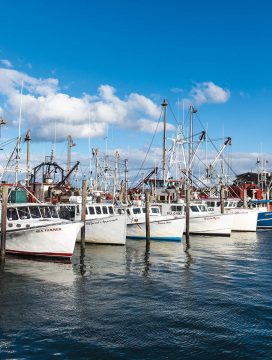 “All commercial fishing is excluded from the area, but fisheries in the top 10 to 20 feet, no way in the world they’re going to impact the bottom,” pointed out Nils Stolpe, communications director of the association. Such is the case for a lot of the Barnegat Light-based boats, he said, for example, longliners and some hook-and-line tuna boats. “They’re fishing 3 miles up above all of this on the ocean floor.” “Longliners are probably affected more than any of our other fisheries up there” by the declaration, said Ernie Panacek, general manager at Viking Village Commercial Seafood Producers in Barnegat Light. “Our bottom longlining boats and surface longlining for sword and tuna boats are going to be affected up there.” Golden tilefish is found on the bottom and tuna and sword on the surface, “and they’re banning all commercial fishing,” Panacek noted. “It’s not a big area, necessarily, but my biggest concern is an expansion of this national monument just like they did in Hawaii,” he added. Panacek said fishermen have done “extensive work” with the Mid-Atlantic Fisheries Council and the Garden State Seafood Association to protect deep-sea coral reefs and sea mounts in the North Atlantic, and were awarded for it. “And now President Obama had to step ahead and do this; I don’t understand,” Panacek said. The federal Magnuson Stevens Act has been managing these areas “and they have been managed properly,” he said. Read the story here 17:47
“All commercial fishing is excluded from the area, but fisheries in the top 10 to 20 feet, no way in the world they’re going to impact the bottom,” pointed out Nils Stolpe, communications director of the association. Such is the case for a lot of the Barnegat Light-based boats, he said, for example, longliners and some hook-and-line tuna boats. “They’re fishing 3 miles up above all of this on the ocean floor.” “Longliners are probably affected more than any of our other fisheries up there” by the declaration, said Ernie Panacek, general manager at Viking Village Commercial Seafood Producers in Barnegat Light. “Our bottom longlining boats and surface longlining for sword and tuna boats are going to be affected up there.” Golden tilefish is found on the bottom and tuna and sword on the surface, “and they’re banning all commercial fishing,” Panacek noted. “It’s not a big area, necessarily, but my biggest concern is an expansion of this national monument just like they did in Hawaii,” he added. Panacek said fishermen have done “extensive work” with the Mid-Atlantic Fisheries Council and the Garden State Seafood Association to protect deep-sea coral reefs and sea mounts in the North Atlantic, and were awarded for it. “And now President Obama had to step ahead and do this; I don’t understand,” Panacek said. The federal Magnuson Stevens Act has been managing these areas “and they have been managed properly,” he said. Read the story here 17:47
Nils Stolpe: Marine Monuments – Don’t let your piece of the ocean be next!
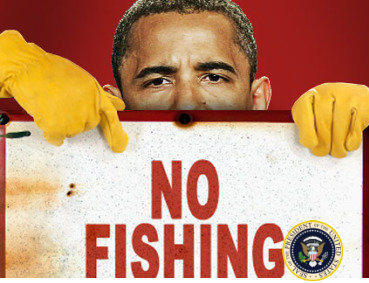 In an effort coordinated by the National Coalition for Fishing Communities (NCFC), thirty four domestic fishing industry trade groups have signed on to a letter to President Obama opposing a strong push by environmental groups and the billion dollar foundations that support them to create marine sanctuaries on both coasts during his last days in office. I don’t need to tell you how much industry effort has been expended over the last several decades to make fishery management under the Magnuson-Stevens Fishery Conservation and Management Act an effective and transparent science-based process. Anyone with an interest in our domestic fisheries, whether on the water, in a shore-based fishing-dependent business or in any way associated with fishing should be committed to improving this process, and President Obama is being urged to circumvent it to bolster his “environmental legacy.” Yesterday the White House announced that the President will be expanding the Papahānaumokuākea Marine National Monument off Hawaii, which was originally created by President Bush in 2006. This will be a no-fishing zone of over half a million square miles. Needless to say, it’s a big hit with the enviros, but it was done without any public process.
In an effort coordinated by the National Coalition for Fishing Communities (NCFC), thirty four domestic fishing industry trade groups have signed on to a letter to President Obama opposing a strong push by environmental groups and the billion dollar foundations that support them to create marine sanctuaries on both coasts during his last days in office. I don’t need to tell you how much industry effort has been expended over the last several decades to make fishery management under the Magnuson-Stevens Fishery Conservation and Management Act an effective and transparent science-based process. Anyone with an interest in our domestic fisheries, whether on the water, in a shore-based fishing-dependent business or in any way associated with fishing should be committed to improving this process, and President Obama is being urged to circumvent it to bolster his “environmental legacy.” Yesterday the White House announced that the President will be expanding the Papahānaumokuākea Marine National Monument off Hawaii, which was originally created by President Bush in 2006. This will be a no-fishing zone of over half a million square miles. Needless to say, it’s a big hit with the enviros, but it was done without any public process.
The letter, with a list of the fishing organizations that are on board so far, is at a web portal set up by the NCFC > Click Here <. Even if you are a member of one of those organizations, please take the few minutes required to personally sign. If you are in a fishing organization that hasn’t, please encourage the leadership to do so. And please encourage as many other folks as possible. The time for top-down governmental dictates was over years ago. We have a system that is starting to work both for the fishermen and the fish and we can’t let it be short circuited. There’s too much at risk.
Nils Stolpe: MPA’s – ENGOs and Foundations next attempt to halt fishing – Déjà vu all over again
 Back in 2002, when various groups and people had figured out that the creation of things called marine protected areas (MPAs) could be sold politically as a mechanism for “saving the oceans,” the people at the Pew Charitable Trusts and the Conservation Law Foundation hired a marketing firm, Edge Research, to demonstrate that New Englanders and Maritime Canadians would be firmly behind using them to put even more fishermen out of work. Well, borrowing from a line made popular by the late Heather O’Rourke in the movie Poltergeist II, they’re back! Only this time they’re trying to convince the Obama White House that two areas off the New England coast are deserving of protection in perpetuity by being designated as National Monuments. Read the rest here 11:36
Back in 2002, when various groups and people had figured out that the creation of things called marine protected areas (MPAs) could be sold politically as a mechanism for “saving the oceans,” the people at the Pew Charitable Trusts and the Conservation Law Foundation hired a marketing firm, Edge Research, to demonstrate that New Englanders and Maritime Canadians would be firmly behind using them to put even more fishermen out of work. Well, borrowing from a line made popular by the late Heather O’Rourke in the movie Poltergeist II, they’re back! Only this time they’re trying to convince the Obama White House that two areas off the New England coast are deserving of protection in perpetuity by being designated as National Monuments. Read the rest here 11:36

Magnuson management – how well is it working?
“Through investment and sacrifice on the part of our commercial and recreational fishermen, today, landings by U.S. commercial fishermen—and the value they get for those landings—are near all-time highs” The Governance of Fish: Forty Years under the Magnuson-Stevens Act, 04/11/2016, Sam Rauch (Deputy Assistant Administrator for Regulatory Programs, NOAA Fisheries) Periodically I like to do an overview of U.S. fisheries to give readers the opportunity to evaluate how their fisheries are doing relative to other domestic fisheries. This seems particularly relevant today, particularly considering Sam Rauch’s “happy birthday to us” anniversary statement up above. Nils Stolpe, FishNet USA Click here to read, and review the charts and graphs. 14:02
Nils Stolpe – Are you getting the idea that if you’re a fisherman Daniel Pauly isn’t on your side?
 FishNet-USA/February 22, 2016 – “… The crisis in the world’s fisheries is less about scientific proof than about attitude and political will. And the world’s fish need a dynamic, high-profile political champion like a Bono or Mandela to give finned creatures the public profile of cute and furry ones.” (Daniel Pauly in “Hooked on fishing, and we’re heading for the bottom, says scientist”,,, This quote by the Pew Charitable Trusts’ premier fisheries researcher says just about all that needs to be said about the ongoing anti-fishing campaign that they have been financing, along with a handful of other mega-foundations, to convince anyone who is willing to listen that, in spite of a dearth of compelling scientific evidence supporting this strum und drang , the world’s oceans are – and have been – facing a crisis brought about because of the depredations of commercial fishermen. Where are the Kardashian’s when Pauly really needs them? Read the rest here 19:23
FishNet-USA/February 22, 2016 – “… The crisis in the world’s fisheries is less about scientific proof than about attitude and political will. And the world’s fish need a dynamic, high-profile political champion like a Bono or Mandela to give finned creatures the public profile of cute and furry ones.” (Daniel Pauly in “Hooked on fishing, and we’re heading for the bottom, says scientist”,,, This quote by the Pew Charitable Trusts’ premier fisheries researcher says just about all that needs to be said about the ongoing anti-fishing campaign that they have been financing, along with a handful of other mega-foundations, to convince anyone who is willing to listen that, in spite of a dearth of compelling scientific evidence supporting this strum und drang , the world’s oceans are – and have been – facing a crisis brought about because of the depredations of commercial fishermen. Where are the Kardashian’s when Pauly really needs them? Read the rest here 19:23
FishNet USA/Update – So how’s that “catch shares” revolution working out for groundfish?
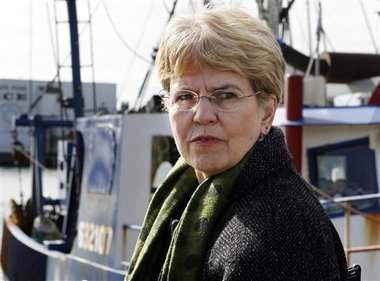 From Nils Stolpe – Alternating with original FishNet USA articles I will be going back to pieces I’ve written (for FishNet and other outlets) over the past 19 years – isn’t it amazing how fast time goes when you’re having fun? – to see how accurate I was in identifying industry trends and predicting what their impacts were going to be. Rather than redistributing the original articles I’ll link to them on the web and try to keep these updates to two pages or under. The original for this update from March, 2014 can be read here Read the rest here. 13:31
From Nils Stolpe – Alternating with original FishNet USA articles I will be going back to pieces I’ve written (for FishNet and other outlets) over the past 19 years – isn’t it amazing how fast time goes when you’re having fun? – to see how accurate I was in identifying industry trends and predicting what their impacts were going to be. Rather than redistributing the original articles I’ll link to them on the web and try to keep these updates to two pages or under. The original for this update from March, 2014 can be read here Read the rest here. 13:31
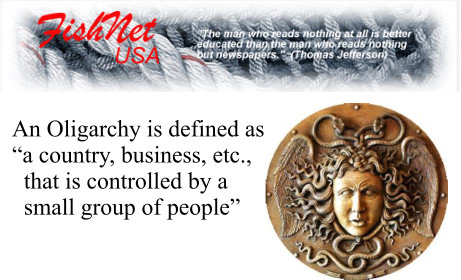
Who’s really in charge of U.S. fisheries? – Nils Stolpe, FishnetUSA
An Oligarchy is defined as “a country, business, etc., that is controlled by a small group of people” – Ancient City Shrimp is an eight minute YouTube video (Click here) produced by the St. Augustine Lighthouse Museum that examines St. Augustine’s past as one of several centers of commercial shrimping in Florida. Unfortunately – or perhaps tragically is a better fit – Florida’s shrimp fleet is only a shadow of what it once was. One of the reasons for this is the imposition of unrealistic regulations on U.S. shrimpers that has made the fishery much less profitable than it used to be. A history lesson or two. Read the rest here 16:27
Fishing industry takes PBS to task for misleading promotion
 In a letter to Paula A. Kerger, President and CEO of Public Broadcasting Service (PBS) which is attached and pasted below, the Seafood Coalition pointed out the inappropriateness of a publicly funded network using glaring distortions to hype an upcoming PBS miniseries. From the letter, “researcher Jeremy Jackson indicted by implication every U.S. fisherman – recreational, commercial, or party/charter – and the federal fisheries management system that we are and have been heavily invested in making the best in the world since the passage of the Magnuson-Stevens Fishery Conservation and Management Act in 1976.” Read the letter here An Interview with Jeremy Jackson, Renowned Oceanographer PBS Trailer Click Here 19:49 photo credit ocean.si.edu 19:55
In a letter to Paula A. Kerger, President and CEO of Public Broadcasting Service (PBS) which is attached and pasted below, the Seafood Coalition pointed out the inappropriateness of a publicly funded network using glaring distortions to hype an upcoming PBS miniseries. From the letter, “researcher Jeremy Jackson indicted by implication every U.S. fisherman – recreational, commercial, or party/charter – and the federal fisheries management system that we are and have been heavily invested in making the best in the world since the passage of the Magnuson-Stevens Fishery Conservation and Management Act in 1976.” Read the letter here An Interview with Jeremy Jackson, Renowned Oceanographer PBS Trailer Click Here 19:49 photo credit ocean.si.edu 19:55
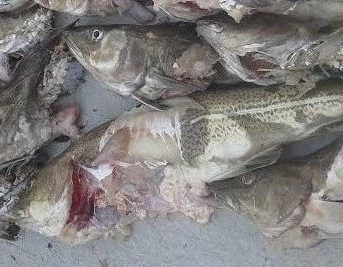
A Must Read! FishNet USA / Dogfish and seals and dolphin, oh my!
The bottom line is that while commercial fishermen from North Carolina to Maine are at work catching on the order of half a million mt of fish and shellfish a year, it appears as if it takes an annual 20,000,000 tons or more to keep all those marine mammals and low-value spiny dogfish and various other predatory fish going. How much of that 20 million tons is commercially/recreationally valuable species or the forage species that sustain them? No one seems awfully interested in finding that out, but they sure should be. Read the rest here 10:55
“Anecdotal Information” is what the professional fisheries people call it, usually dismissively
First off, A Mia Culpa. In the last FishNet, which was distributed in early October, I referred to “ (or actually an almost-assessment).” It was pointed out to me, and rightfully so, that this could have left readers with the impression that this was somewhat less accurate and/or reliable than a “real” assessment of the cod stock. I was assured that this wasn’t the case and,,, Plus, When you’re used to those big bucks you’ve gotta keep ‘em coming in, and,Great news on Atlantic bluefin tuna – Read the rest here 11:19:58
Your roots are showing – don’t be convinced by seeming grass roots efforts
 Particularly now that the reauthorization of the Magnuson-Stevens Fishery Conservation and Management Act is at hand, much is being made of the supposed grass roots endorsements that are supposed to benefit all of the fishermen who the endorsers claim to be representing. This being the case, I thought it might be useful to examine what “grass roots” really means and to contrast some bona fide grass roots fishing groups with some that, in spite of their billing, might not live up to such a claim. A handful of fishermen and other folks involved in the fishery and one volunteer, a gentleman named Jonathan Gonzalez who started out firmly in favor of “protecting” the oceans from fisherman but after digging into the issues rightfully concluded that these fishermen were the ones who were wearing the white hats and shifted his allegiance, went to Sacramento to attend a hearing on the legislation. Read the rest here 14:00
Particularly now that the reauthorization of the Magnuson-Stevens Fishery Conservation and Management Act is at hand, much is being made of the supposed grass roots endorsements that are supposed to benefit all of the fishermen who the endorsers claim to be representing. This being the case, I thought it might be useful to examine what “grass roots” really means and to contrast some bona fide grass roots fishing groups with some that, in spite of their billing, might not live up to such a claim. A handful of fishermen and other folks involved in the fishery and one volunteer, a gentleman named Jonathan Gonzalez who started out firmly in favor of “protecting” the oceans from fisherman but after digging into the issues rightfully concluded that these fishermen were the ones who were wearing the white hats and shifted his allegiance, went to Sacramento to attend a hearing on the legislation. Read the rest here 14:00


































